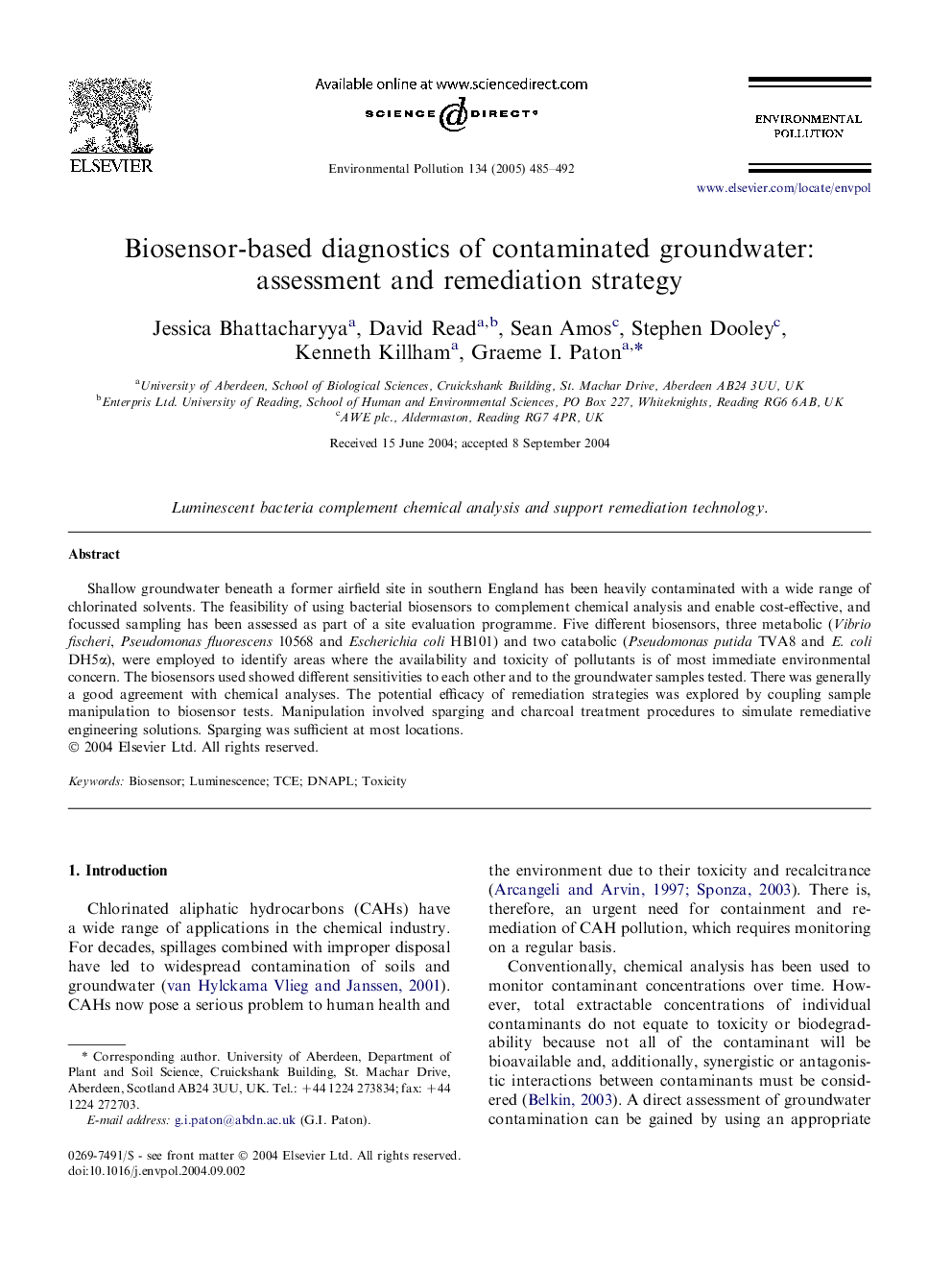| Article ID | Journal | Published Year | Pages | File Type |
|---|---|---|---|---|
| 9456450 | Environmental Pollution | 2005 | 8 Pages |
Abstract
Shallow groundwater beneath a former airfield site in southern England has been heavily contaminated with a wide range of chlorinated solvents. The feasibility of using bacterial biosensors to complement chemical analysis and enable cost-effective, and focussed sampling has been assessed as part of a site evaluation programme. Five different biosensors, three metabolic (Vibrio fischeri, Pseudomonas fluorescens 10568 and Escherichia coli HB101) and two catabolic (Pseudomonas putida TVA8 and E. coli DH5α), were employed to identify areas where the availability and toxicity of pollutants is of most immediate environmental concern. The biosensors used showed different sensitivities to each other and to the groundwater samples tested. There was generally a good agreement with chemical analyses. The potential efficacy of remediation strategies was explored by coupling sample manipulation to biosensor tests. Manipulation involved sparging and charcoal treatment procedures to simulate remediative engineering solutions. Sparging was sufficient at most locations.
Related Topics
Life Sciences
Environmental Science
Environmental Chemistry
Authors
Jessica Bhattacharyya, David Read, Sean Amos, Stephen Dooley, Kenneth Killham, Graeme I. Paton,
